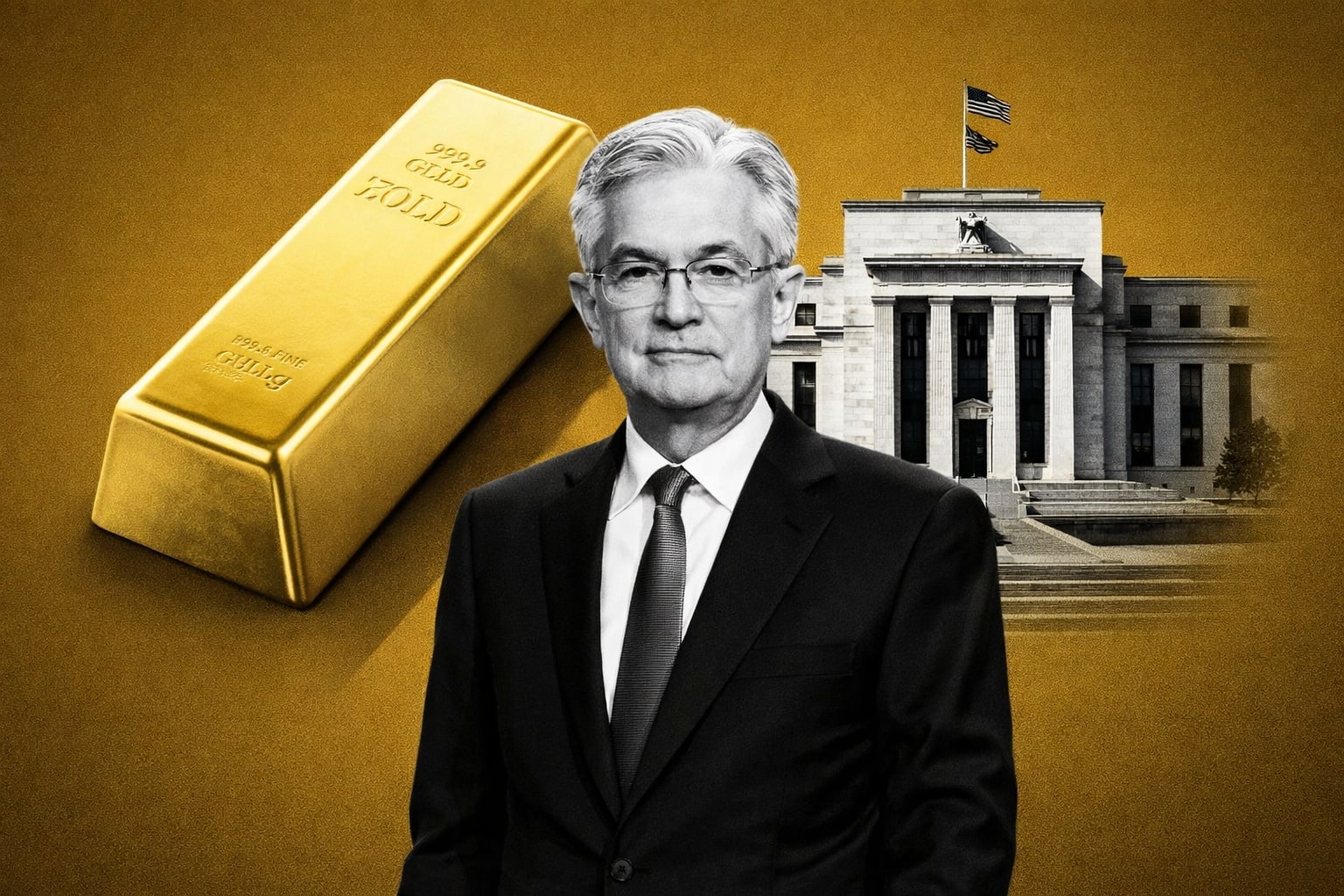
Gold Prices Supported by Global Unrest, Eyeing $3,000 in 2024
Geopolitical Tensions and Central Bank Buying Keep Gold Afloat Despite Economic Headwinds | That's TradingNEWS
Gold's Price Movement Under Global Uncertainty
US Labor Market Shakes Gold’s Path
Gold (XAU/USD) recently faced pressure following a surprisingly strong US labor market report. The data revealed an unexpected surge in job creation, with September’s numbers outperforming predictions by a large margin. Over 250,000 jobs were added, pushing unemployment down and increasing average hourly earnings. This development reduced expectations of aggressive rate cuts by the Federal Reserve, which had a direct impact on the price of gold. As of the latest trading, gold slid to just above $2,630 per ounce, a significant drop from its highs, reflecting the market's reaction to stronger US economic performance.
However, while the labor data might seem bearish for gold, the ongoing geopolitical tension, particularly between Israel and Iran, has fueled demand for the precious metal as a safe-haven asset. ETF inflows saw an increase of nearly 9 tons, reflecting investor sentiment favoring gold amid uncertainties. This duality of strong US economic data against geopolitical risks has gold pulled in opposing directions, with the next big mover likely being the upcoming US inflation data.
HSBC Adjusts Gold Price Forecast
Global banks like HSBC have responded to gold’s recent performance by adjusting their forecasts upwards. The rally in gold prices, reaching a record of $2,865 in late September, was driven largely by hedge fund activity and geopolitical risks. HSBC now forecasts an average gold price of $2,395 per ounce in 2024, up from a previous estimate of $2,305. The bank’s long-term outlook also turned more bullish, predicting $2,625 for 2025 and $2,515 for 2026.
These upgrades are influenced by sustained geopolitical risks and the ongoing monetary easing cycle across the globe. However, HSBC did warn that the rally might face headwinds, particularly from a firmer US dollar. As the Federal Reserve’s easing cycle unfolds, gold may lose some of its upward momentum unless geopolitical tensions continue to intensify or fiscal imbalances worsen.
Gold ETF Trends and Central Bank Purchases
In contrast to ongoing ETF liquidations, over-the-counter purchases and real-money buying remain strong. This support for gold prices is partly sustained by continued central bank demand. Central banks worldwide, particularly in emerging markets like China, India, and Russia, continue their aggressive gold buying, bolstering reserves as a hedge against currency fluctuations and global economic uncertainty.
Despite a recent moderation in central bank purchases, 2024 and beyond see continued support from these institutions, which is essential for maintaining price stability in the gold market. The key question for analysts remains how far central banks will go if gold prices rise dramatically without a significant correction.
Technical Analysis: Gold at a Crossroad
From a technical standpoint, gold finds itself in a consolidative phase, flirting with key support and resistance levels. With strong resistance sitting around $2,665, the next upside objective for gold bulls is $2,700 per ounce. On the downside, any breach below the $2,630 level could open the gates for further declines, potentially targeting the psychological $2,600 mark. However, a sustained breakout above current resistance could lead to a retest of $2,800, a level that, if breached, could signal a broader bullish breakout, possibly toward $3,000.
Indicators like the Relative Strength Index (RSI) remain neutral, with momentum needing a definitive push from either macroeconomic data or geopolitical events to break out of the current range. A strong break in either direction will dictate gold’s next move, but for now, the market is watching closely for clues from US inflation data, set to be released shortly.
Impact of US Dollar and Interest Rate Cuts
The relationship between gold and the US dollar continues to play a significant role in shaping gold’s price movement. Recent strength in the dollar, spurred by solid economic performance, has kept gold's upside in check. However, markets are still pricing in a 25-basis point rate cut by the Federal Reserve in its upcoming November meeting, a move that would normally support gold. Yet, last week’s employment data has lowered the odds of a more aggressive rate cut, tempering bullish sentiment for the precious metal.
With bond yields climbing and economic resilience in the US, gold may struggle to find significant momentum unless geopolitical risks worsen or inflation data surprises to the downside.
Geopolitical Tensions: Gold's Lifeline
The conflict in the Middle East has kept gold prices from falling further. With tensions rising between Israel and Iran, gold's safe-haven status continues to attract investor interest. Escalations, particularly concerning potential military strikes, are providing strong tailwinds for gold prices, mitigating the impact of stronger economic data from the US.
Central to this narrative is the role of geopolitical risks in offsetting the impact of hawkish central bank policy. While the Federal Reserve may slow down its rate-cut trajectory, any sharp escalation in global conflict could drive gold prices higher, as witnessed with the recent surge in ETF inflows. Investors looking to hedge against market volatility amid global instability are increasingly turning to gold, reinforcing its position as a safe-haven asset.
Market Outlook: Gold in 2024 and Beyond
Looking ahead, analysts are projecting a wide trading range for gold, between $2,350 and $2,950 through 2025. For 2024, HSBC anticipates a year-end target of $2,725, with 2025 forecasts settling at $2,575. Central banks, geopolitical tensions, and fiscal deficits will continue to underpin demand for gold, providing stability and upward pressure on prices.
While the US dollar remains a potential headwind, any significant geopolitical or economic downturn could trigger a sharp rally in gold prices. Central banks are likely to remain key players in the market, with sustained purchases providing a solid price floor. Investors should watch for US inflation data and further developments in the Middle East, as these events will likely shape gold’s next major move.
Buy, Sell, or Hold?
Gold remains a buy for those seeking a hedge against volatility and global risks. With central bank demand holding steady, geopolitical tensions high, and inflationary concerns still lingering, gold’s appeal as a safe-haven asset is undeniable. However, caution is warranted, as a firmer US dollar and higher interest rates could limit its upside in the near term. For long-term investors, the $3,000 level remains a viable target, but short-term volatility may require a more measured approach.
In summary, while gold faces headwinds from a stronger US economy, its resilience in the face of geopolitical risks and continued central bank demand provides a solid foundation for future gains.
That's TradingNEWS
Read More
-
GPIX ETF 8% Monthly Yield and S&P 500 Upside at $53
13.01.2026 · TradingNEWS ArchiveStocks
-
XRP ETFs XRPI, XRPR and Bitwise XRP Pull In $1.5B as XRP-USD Stalls Around $2.13
13.01.2026 · TradingNEWS ArchiveCrypto
-
Natural Gas Price Forecast: NG=F Climbs Off $3.00 Floor as Cold Snap and LNG Flows Lift UNG
13.01.2026 · TradingNEWS ArchiveCommodities
-
USD/JPY Price Forecast - USDJPY=X Charges Toward ¥159 as Japan Election Fears Hit the Yen
13.01.2026 · TradingNEWS ArchiveForex



















